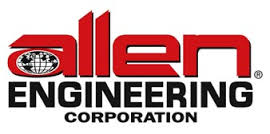
Does Perpendicular Ever Mean Parallel?
© 2002, Dawsey Co., LPA
November 2002
Does Perpendicular Ever Mean Parallel? The United States Court of Appeals for the Federal Circuit (CAFC) does not think so! The recent case of Allen Engr. Corp. v. Bartell Indust., Inc. demonstrates the importance of a close working relationship between a company and their patent attorney.
Allen Engineering Corporation (Allen) brought suit against Bartell Industries, Inc. (Bartell) alleging infringement of Allen’s U.S. Patent No. 5,108,220 covering a self-propelled, fast steering motorized riding trowel for concrete surface finishing.
One, of several, interesting aspects of this case centers on the second paragraph of 35 USC 112. A requirement of this paragraph is that the inventor must disclose the invention with sufficient particularity and distinctness. In analyzing “sufficient particularity and distinctness,” the Court must consider whether “one skilled in the art would understand the bounds of the claim when read in light of the specification.”
Unfortunately for Allen, the claims of the patent at issue utilize the term “perpendicular” to describe a plane in which a steering box pivots, while the specification contradicts the perpendicular language going so far as to disclose that the steering box cannot pivot in the previously mentioned perpendicular plane. Bartell argued, and the Court agreed, that the claims that contain this discrepancy are invalid under the requirements of 35 USC 112.
Allen attempted to extinguish the Bartell argument by arguing that one with skill in the art would understand that the term “perpendicular” in the claims should be read to mean “parallel.” The Court points out that “Allen stretches the law too far,” and that “it is not the function of the Court to rewrite claims to preserve their validity.” Therefore, the Court held that the erroneous “perpendicular” limitation invalidates the claims at issue.
This case exemplified the importance of an inventor’s involvement in the drafting of a patent application, especially in thoroughly reviewing the entire application. One particularly troublesome trend is that of inventors simply skimming over the claims when reviewing an application. Patent attorneys understand that the claims are typically difficult to read, however the claiming method has evolved over hundreds of years and inventors must accept that it is unlikely to change. An attorney should welcome your questions, comments, and suggestions because this process will ultimately lead to stronger patents. In the present case, a little additional time reviewing the application may have prevented the CAFC from vacating the district court’s award in excess of $463,000
